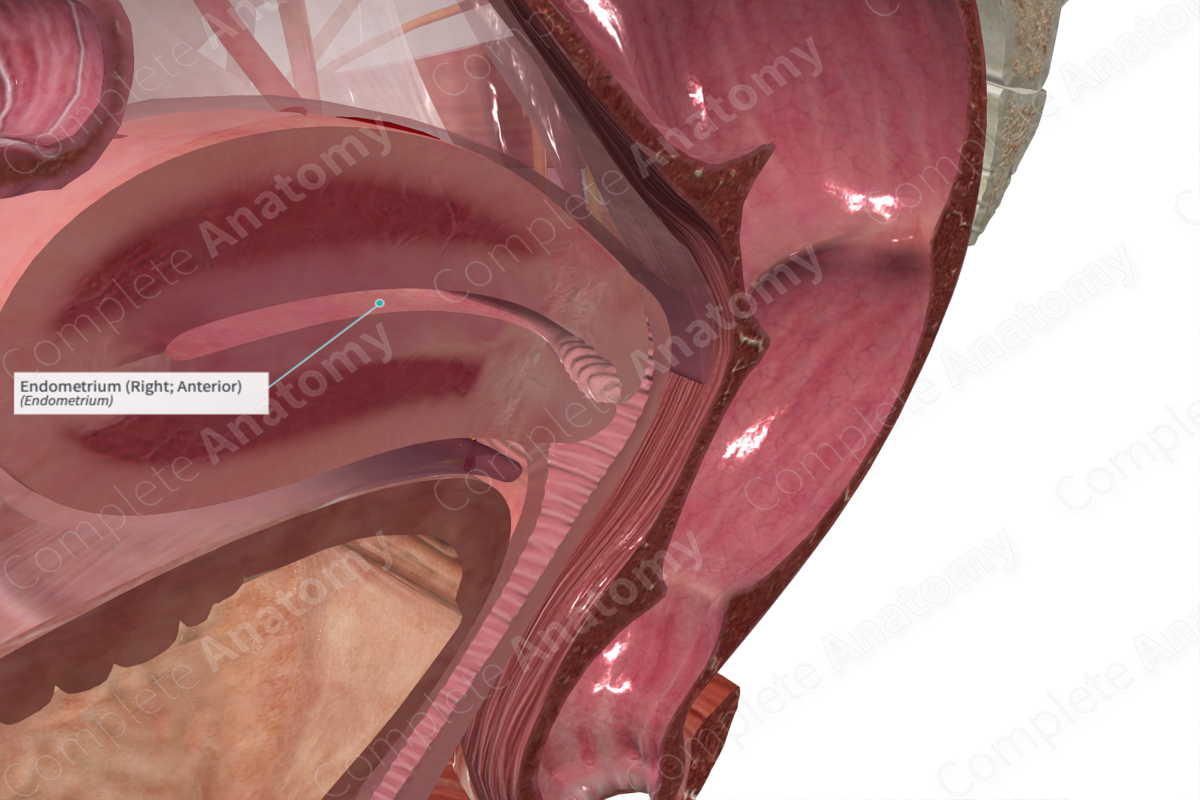
Structure/Morphology
The endometrium is the inner lining of the uterus that undergoes constant remodeling during the menstrual cycle. The endometrium consists of a layer of columnar epithelium and an underlying layer of dense stromal connective tissue. The stroma contains tubular glands which are also lined by columnar epithelial cells. It also contains connective tissue, blood vessels, nerves, and lymphatics.
Key Features/Anatomical Relations
The endometrium lines the uterine cavity and is divided into two regions.
—There is a functional zone that underlies the luminal epithelium. It contains many glands and undergoes extensive alterations during the menstrual cycle.
—The basal zone, adjacent to the myometrium layer, has minimal glands and is not shed during menstruation.
During the mid-secretory phase of the menstrual cycle (approximately day 21), the endometrial lining is at its thickest (about 6 mm think).
Function
The endometrial lining thickens during the menstrual cycle in anticipation of implantation of the embryo. If implantation occurs, the blood vessels and tissue of the endometrium continue to increase in size and quantity to support the development of the embryo. This dense network of vessels will eventually become the placenta and will support the developing fetus. If implantation does not occur, the functional zone of the endometrium is shed in response to the breakdown of the corpus luteum and thus, a new menstrual cycle begins.
List of Clinical Correlates
—Endometriosis
—Endometrial cancer



